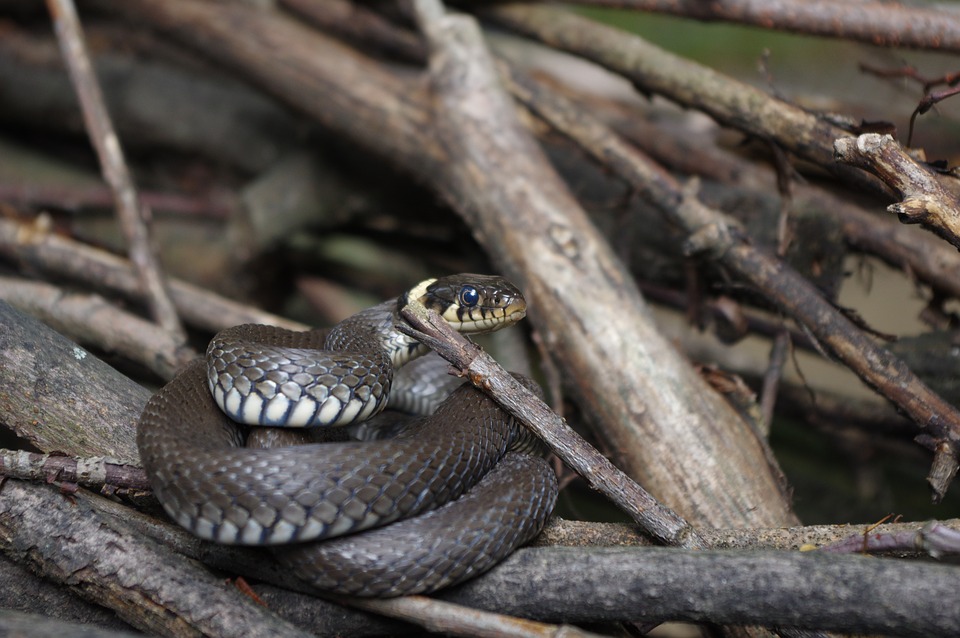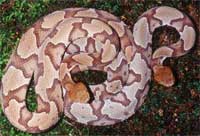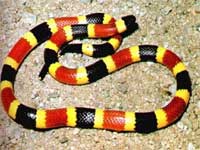Snake Precautions for the Home, Farm and Field
 In my life I have been an avid outdoorsman, hiking and camping in a variety of climates. During those outings, I have come in close contacts with snakes four times in nearly twenty years. During the same period of time, I have encountered snakes EIGHT times in urban and suburban settings! Clearly, some knowledge of snake safety is prudent for people of all walks of life and location.
In my life I have been an avid outdoorsman, hiking and camping in a variety of climates. During those outings, I have come in close contacts with snakes four times in nearly twenty years. During the same period of time, I have encountered snakes EIGHT times in urban and suburban settings! Clearly, some knowledge of snake safety is prudent for people of all walks of life and location.
Firstly, I don’t subscribe to the school of thought that encourages the extermination of snakes without discrimination. Snakes are important members of the natural world and make a significant contribution to the control of pests such as rats, insects, and other snakes. That being said, however, poisonous snakes, are not desirable members of the human habitat.
I believe our best course of actions is to discourage snakes from sharing close quarters with humans and being educated in snake safety to avoid unfortunate encounters with humans and snakes cross paths.
Working in our favor is the fact that in North American, the risk of being killed by a poisonous snakebite is lower than that of being struck by lightening! You can further reduce that risk by addressing the three most common situations that lead to snake bites:
- Discourage snake-friendly habitat in your home and yard by cleaning up refuse and other hiding spots around buildings and yards
- Wear heavy shoes and pants when in wooded areas and heavy ground cover, particularly when engaging in clean up and clearing above.
- Remain vigilant of your enviroment and where you place your hands and feet (most snake bites occur on these extremities).
Most poisonous snakes in the United States belong to the pit viper group. The pi viper has pits on its head, vertical pupils, a triangular head, slim neck, and a heav body with a single row of scales on the underside of the tail. The pit viper group includes the major categories of copperhead and cottonmouth and two major categories of rattlesnake. All pit vipers may vibrate their tail sections rapidly to make noise when threatened.
The cottonmouth and copperhead categories are often referred to as mocassins, but they are two distinct categories within the pit viper group.
| Pit Vipers | Other Snakes |
| Flat Triangular Heads | Usually oval, elongated head |
| Facial pit; vertical pupil | No pit; round pupil |
| Single row of scales under end of tail | Double row of scales under end of tail |
If You Are Bitten By A Snake
- If the snake is still in the area, do not attempt to kill or catch it, unless it poses a danger to you or the victim. Try to remember what it looks like so you can identify the type of snake from pictures in the emergency room.
- Remove all items that may restrict circulation in the affected extremity. Watches, bracelets, rings, gloves, or shoes may pose a problem as the bite area swells.
- Immobilize the affected area as much as possible. Attempt to keep the bite at or slightly below the level of the head.
- If swelling occurs rapidly, place a 1-inch-wide constricting band about 2 inches above the bite. This is not a tourniquet and should not fit so tightly you cannot easily slip a finger under it. Do not place a constricting band on a joint.
- Attempt to keep the victim from moving rapidly about while transporting him/her to the nearest emergency medical facility as quickly as possible.
Note:
- Do not Give the victim anything to eat or drink, particularly alcohol;
- Do not Place the affected area in ice;
- Do not Make any cuts or apply suction to the area;
- Do not Attempt to give antivenom; or
- Do not Administer pain or anti-anxiety medications
Safety Precautions With Snakes
After a flood, storms, or hurricane, snakes are forced into places where they usually are not found. Take the following precautions if you live in an area where poisonous snakes are common.
- Know how to identify poisonous snakes common to your area.
- Be alert for snakes in unusual places. They may be found in or around homes, barns, outbuildings, driftwood, levees, dikes, dams, stalled automobiles, piles of debris, building materials, trash, or any type of rubble or shelter.
- Keep a heavy stick or some other weapon handy.
- Search the premises thoroughly for snakes before beginning any cleanup or rescue operations. Snakes may be under or near any type of protective cover.
- In rescue or cleanup operations, wear heavy leather or rubber high-topped boots, and heavy gloves. Wear trouser legs outside boots. Be extremely careful around debris. Use rakes, pry bars, or other long-handled tools when removing debris. Never expose your hands, feet, or other parts of your body in a place where a snake might hide.
- Carry a strong light after dark.
- Explain to children the dangers of snakes under storm or flood conditions, and the precautions they should follow. Do not allow children to play around debris.
- If you kill a poisonous snake, use a stick, rake, or other long-handled tool to carry the snake away for disposal. Snakes may bite even when they appear dead.
- If you realize you are near a snake, avoid sudden movement, which may cause the snake to strike. If you remain still the snake may leave. If the snake doesn’t move away from you slowly back away from it.
- If someone is bitten by a poisonous snake, call a doctor immediately.
Controlling Snakes
To get rid of snakes in buildings and to prevent other snakes from entering:
- Remove snakes’ food supply. Eliminating rats and mice from an area often discourages snakes.
- Remove snakes’ hiding places. Get rid of lumber piles, trash piles, high weeds and grasses, and debris.
- Block openings where snakes might enter buildings. Snakes can pass through extremely small openings and usually enter near or below ground level. Be sure doors, windows, and screens fit tightly. Search walls and floors for holes or crevices. Inspect the masonry of foundations, fireplaces, and chimneys; plug or cement cracks. Plug spaces around pipes that go through outside walls. Fasten galvanized screen over drains or ventilators, or over large areas of loose construction.
There are no sprays, dusts, or poisons that have legal registration for use around homes or farms to repel or kill snakes.
Low places under houses are likely to trap water, which provides a harborage for water moccasins. Outdoor sheds and barns are also ideal places for snakes to hide. These areas should be drained if possible.
Additional Research:
   |



